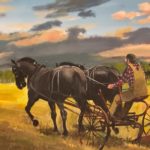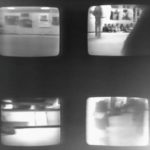New Tweed director thinks of museum as classroom
The fall semester hasn’t quite begun at the University of Minnesota Duluth, but the new director of the Tweed Museum of Art has been meeting with faculty in disciplines across campus to examine how the museum can further contribute to intellectual pursuits.
Julie Delliquanti talks about an approach that aligns the Tweed with the practices of 21st century university art museums.
“Consider the museum as a classroom on campus,” she said. “The museum offers opportunities for teaching and learning using our primary source materials (the museum’s collection) … not unlike the library or the herbarium does.”
Delliquanti has been an arts administrator, educator and curator in museums, contemporary art centers and universities for more than 20 years. She recently served as head of visitor experience at the University of California Irvine’s Jack and Shanaz Langson Institute and Museum of California Art, where she was part of the senior leadership team building a new university art museum. Before that, she worked with public programs and community engagement at Emory University’s Schatten Gallery.
Her vision for the Tweed goes beyond historical efforts. Delliquanti aims to organize exhibitions and rotations of permanent collection works that provide teaching and learning opportunities for faculty, staff, visitors and students. She said everyone is encouraged to “encounter artists, artwork and ideas that surprise, amaze, inspire and potentially challenge their worldviews and perspectives.”
This goal goes beyond the often stellar work of the museum’s past: showcasing exhibitions, teaching art history and presenting the work of faculty and the students in the B.A. and B.F.A. art programs. She proposes using a museum collection to support an expansive list of faculty with their courses.
“The job of the museum is to present you with new ideas, to challenge your assumptions, maybe inspire you, maybe even rethink your worldview, maybe … take you to a different place and a different way of thinking.”
“How do you teach through objects?” Delliquanti asked. She wants to invite involvement from all disciplines, from the humanities to the sciences. “How can engineering and biology faculty use the museum?” She gave examples: “University art museums have worked with faculty to create exhibits that invite their medical school students to learn about empathy … about grief, death, dying and loss.”
Delliquanti is also interested in examining fine arts in depth and gives examples of using different perspectives the Tweed staff has adopted in the past. [We can] “have a conversation about portraiture … about the Gilded Age … and about what it means to be an art collector.”
Shaking things up is part of Delliquanti’s vocabulary. She talks about museums that require participation.
“So even when you think you’re just sitting and reflecting, you’re actively changing … you’re transforming … you’re becoming something different.”
Recommended Links:
Leave a Comment
Only registered members can post a comment , Login / Register Here
















No Comments